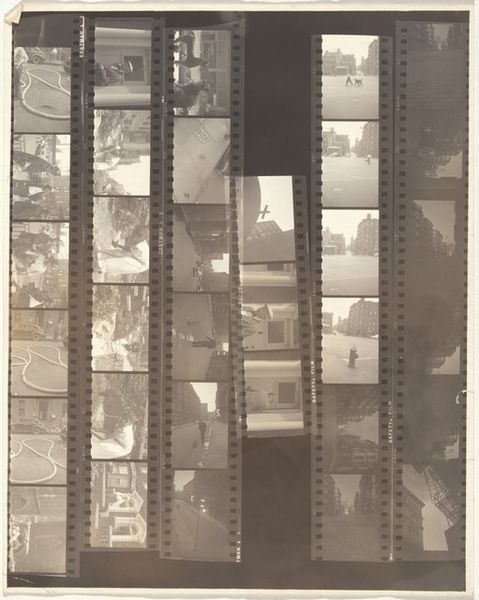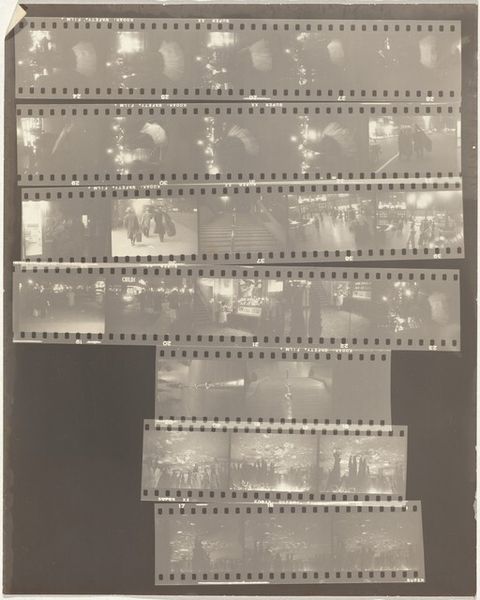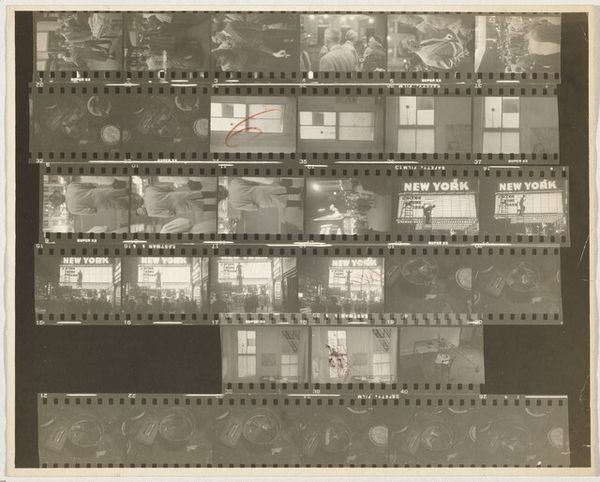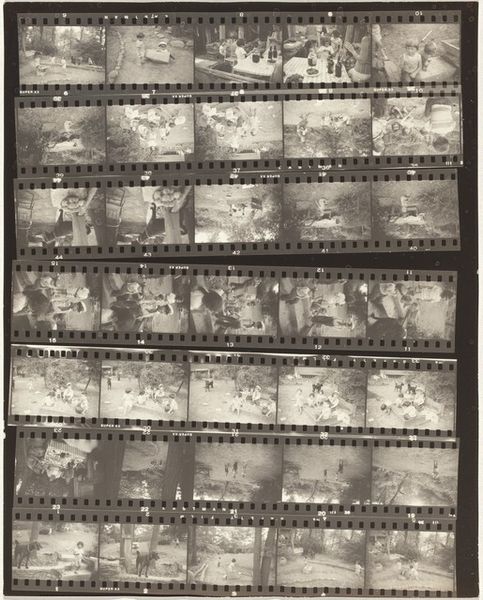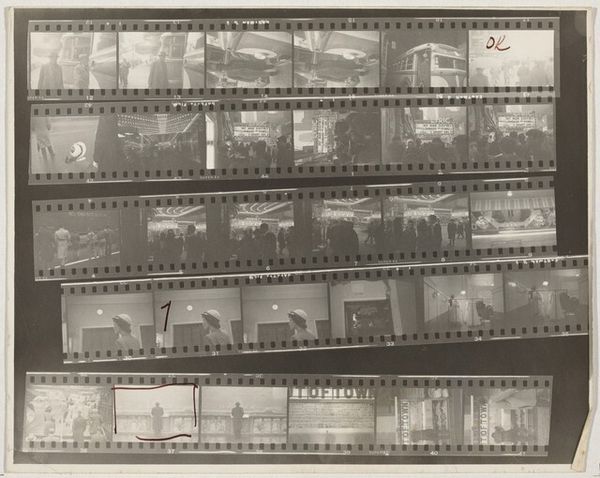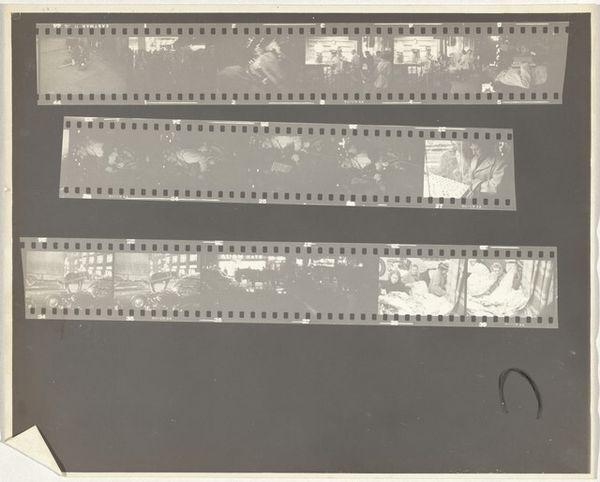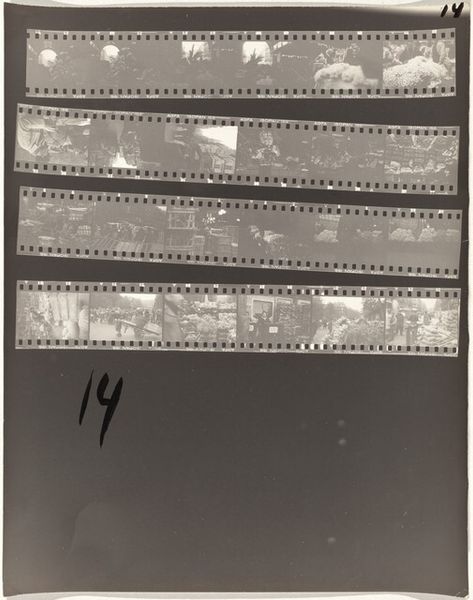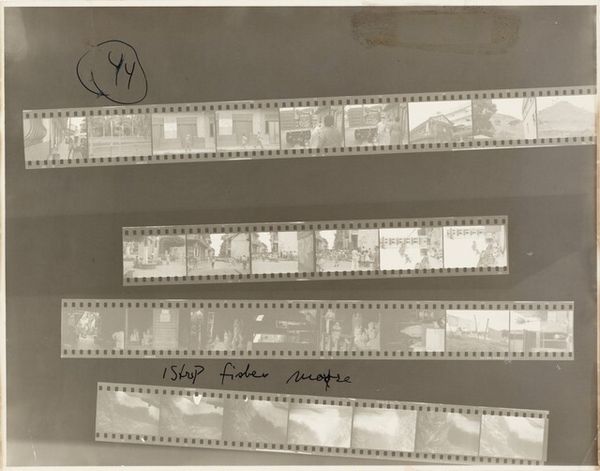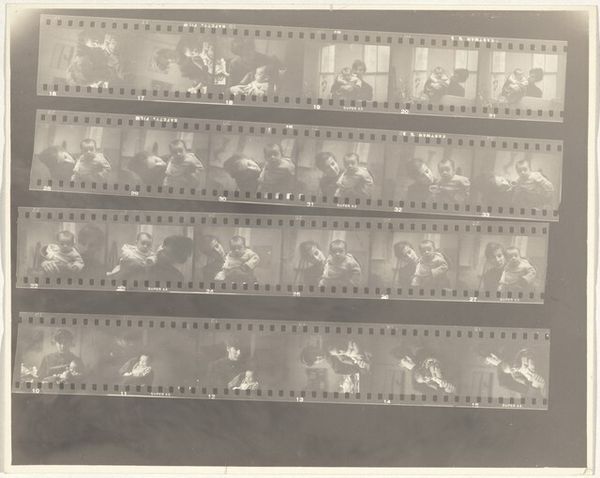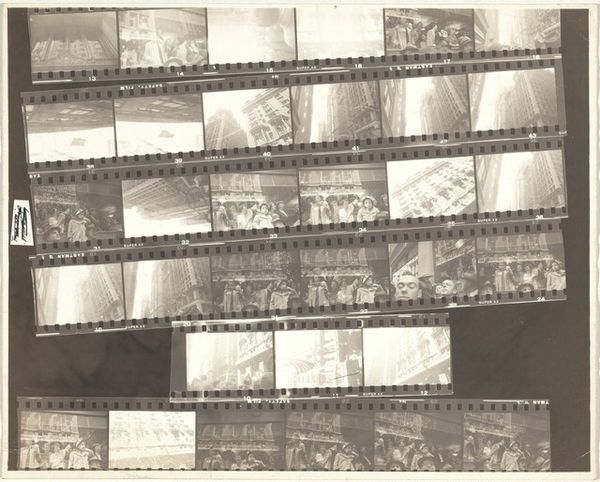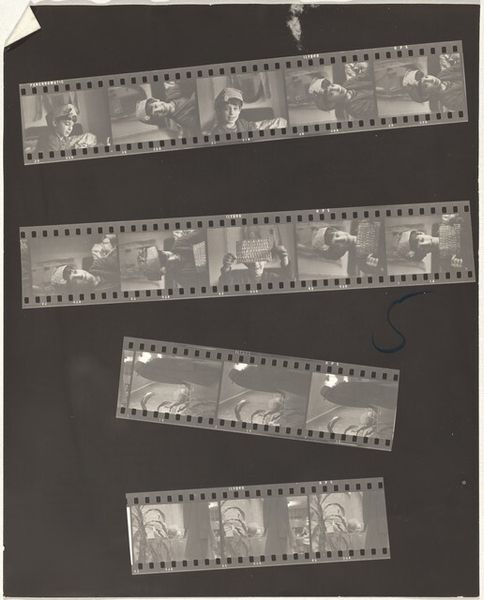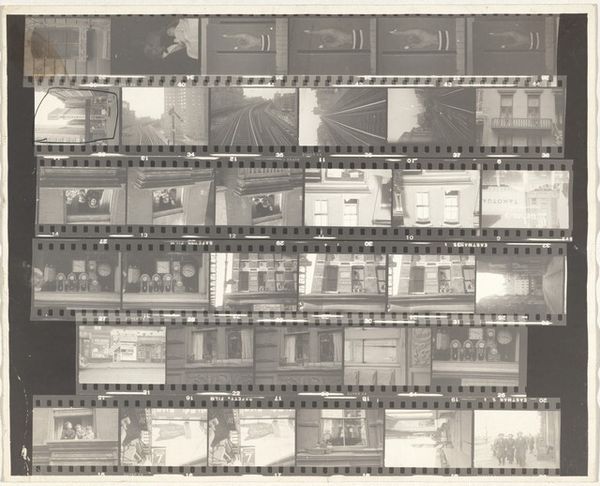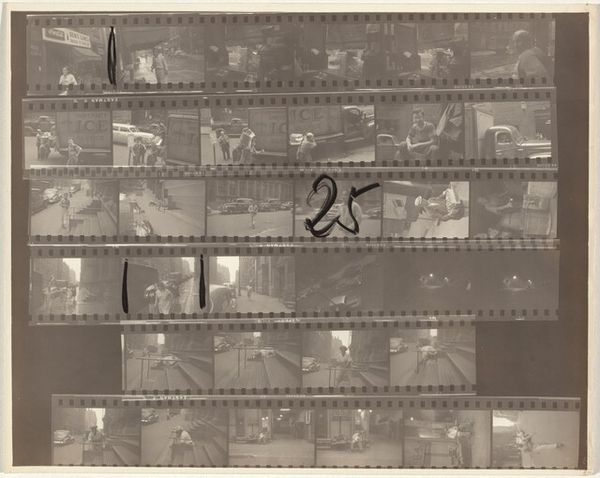
#
aged paper
#
hand written
#
homemade paper
#
paper non-digital material
#
parchment
#
sketch book
#
hand drawn type
#
paper texture
#
fading type
#
stylized text
Dimensions: overall: 20.3 x 25.2 cm (8 x 9 15/16 in.)
Copyright: National Gallery of Art: CC0 1.0
Editor: We’re looking at Robert Frank's "Early New York City 7", created between 1950 and 1955. It’s a series of film strips arranged on paper, and the high contrast creates a rather gritty, almost unsettling effect. What strikes you about the formal elements here? Curator: The grid-like arrangement immediately presents a formal structure. Note how the strips of film are not presented as seamless narratives, but rather as fragmented moments. The texture of the paper backing also serves a purpose – adding another layer to the visual field. It underscores the materiality of the photograph itself. What purpose do you think that layering, and indeed that contrast, serves? Editor: It seems like he’s drawing attention to the photographic process, not just the content of the images. Highlighting the artifice, maybe? But how does the subject matter – the city – fit in? Curator: Precisely. Consider how Frank juxtaposes different types of imagery – cityscapes, people, architectural details. There isn't necessarily a cohesive narrative across the entire piece. Each film strip behaves independently, creating a tension. Note too the cropping, and the deliberate markings on some frames. Do they suggest anything to you? Editor: That some images were selected, emphasized? He’s isolating moments and forcing us to consider them closely, but why these particular moments, arranged this way? Curator: One could argue that the ‘why’ is less relevant than the ‘how’. How do the formal relationships – the tonal contrasts, the juxtaposition of textures, the disrupted grid – shape our experience of viewing this representation of the city? It disrupts easy narratives and simple observations. Editor: So it’s less about what Frank saw and more about how he chose to show it? It's an interesting way to break down a familiar subject through composition. Curator: Precisely. Thinking about how those formal choices alter perception provides the keenest insight, I find. Editor: It changes how I'll think about photographic compositions moving forward, certainly!
Comments
No comments
Be the first to comment and join the conversation on the ultimate creative platform.
